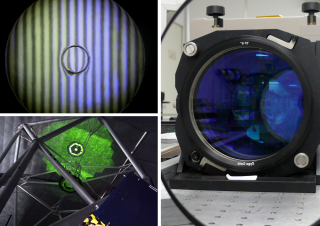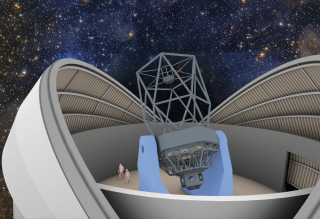New Robotic Telescope
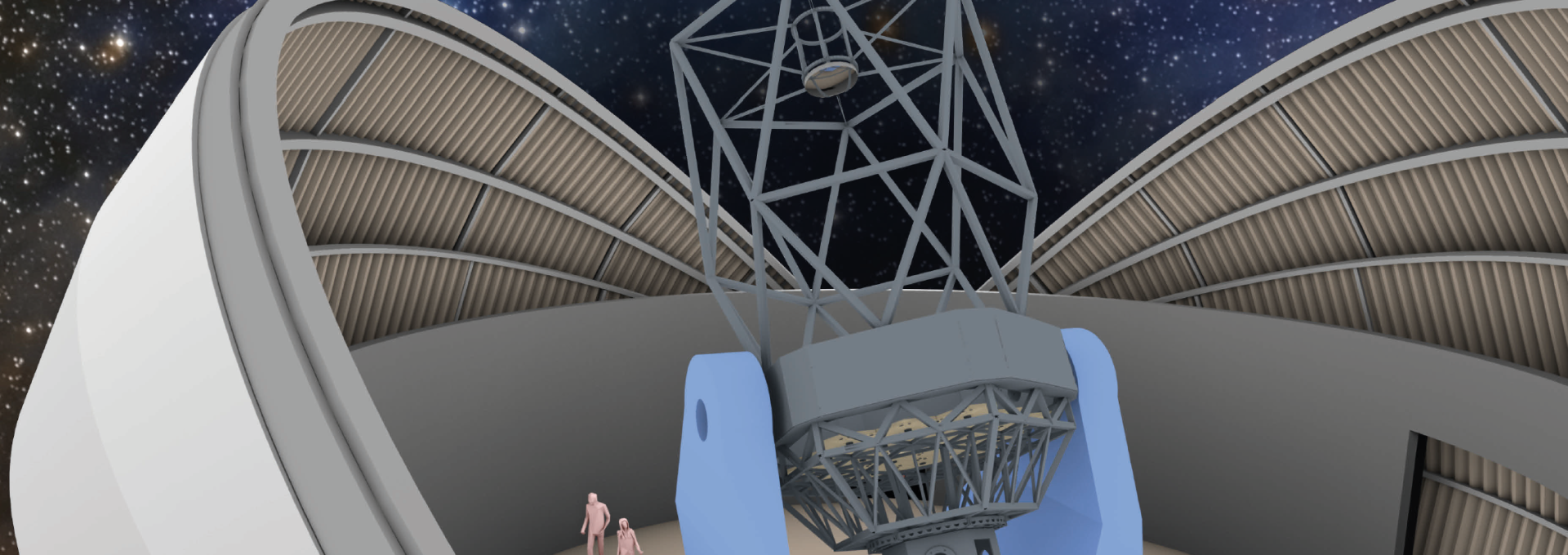

NRT will be the biggest robotic telescope in the World. Located in the outstanding astronomical observatory Roque de los Muchachos, it is expected to open up a new window to the Universe for the rapid follow up of transient phenomena such us supernova explosions or the falling of material into the big black holes in the center of active galaxies.
The next generation of transient surveys such as LSST will detect transients with typical magnitudes which are beyond the capabilities of 2-metre class telescopes for spectroscopic follow-up. The single visit depth of LSST will be approximately 24.5 in the r-band, so many transients will be beyond the capabilities of even 4-metre class telescopes. However, the pressure on 8-metre telescope time is high and will still be high in 2020+, so 4-metre class facilities will need to do the bulk of the follow-up work, and this work will be limited by the facilities available, rather than the number of transient detections (this is true even today). Recently the Public ESO Spectroscopic Survey of Transient Objects has shown that dedicating large amounts of 4-metre time to spectroscopic follow-up of transients can be extremely scientifically productive.
A robotic telescope with a 4 metre aperture would be a powerful tool for the study of supernovae, since the flexibility of robotic scheduling allows observing cadences to be optimised for each individual object. As well as supernovae, we are also interested in more exotic classes of transient. Experience has shown that the response time of a robotic telescope makes it a particularly powerful tool for the study of rapidly fading transients, such as the afterglows of Gamma-Ray Bursts. The typical response time of the Liverpool Telescope to a Swift trigger; including slew time, mirror settling time, instrumental overhead etc., is between one and two minutes. If this response time can be reduced, the rapid decay rate of the afterglow means it can be observed when it is considerably brighter: response time commonly trumps aperture, in this particular case.
In the next image, the future site of NRT can be seen. Next to the telescope William Herschel, it will occupy the place of the old Carlsberg Meridian Telescope.
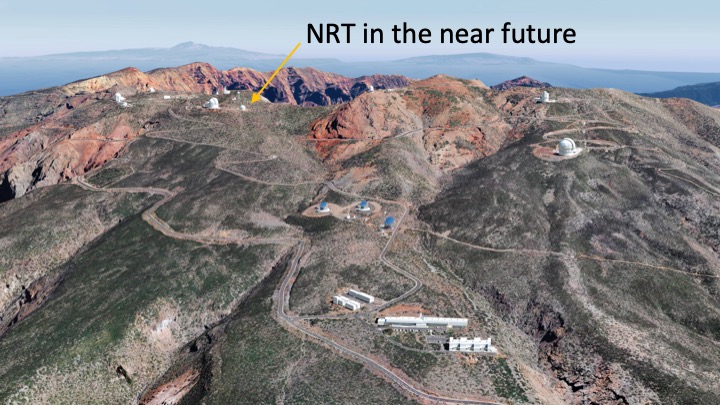
Este proyecto es financiado por la subvención EL TELESCOPIO LIVERPOOL 2 EN EL TELESCOPIO DEL ROQUE DE LOS MUCHACHOS de referencia SD 17/02 LIVERPOOL 2 LT2 en el marco del Programa PROGRAMA OPERATIVO DEL FONDO EUROPEO DE DESARROLLO REGIONAL (FEDER) Y FONDO SOCIAL EUROPEO (FSE)DE CANARIAS 2014-2020 de la convocatoria de la Agencia Canaria de Investigación, Innovación y Sociedad de la Información del Gobierno de Canarias y cofinanciado también por el FEDER Fondo Europeo de Desarrollo Regional de la Unión Europea
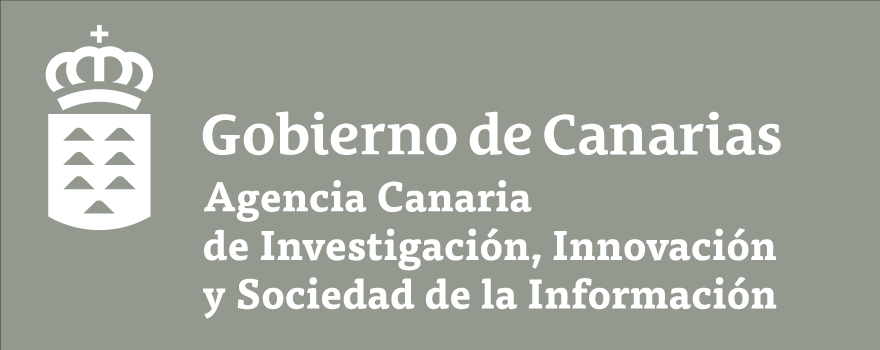



Our concept for LT2 is therefore for an extremely agile, fast slewing telescope. The aim is that from receipt of a trigger from a survey facility, we can be on target and taking data within 20-30 seconds. Triggers will come from proposed missions such as CTA and SVOM, which promise to publish real-time alerts for rapid follow-up of high energy transients. Additionally, a key goal of the time domain community in the coming decades will be to detect the fading electromagnetic counterpart of merging neutron star binaries detected by aLIGO via their gravitational wave emission. The response time of LT2 should enable us to make a key contribution to this programme. As well as fast-fading transients, this capability makes other types of observations possible. Consider for example, a programme in which there is a need to obtain short exposures for a large number of objects dispersed around the sky. The overheads of a conventional telescope would make such a programme too inefficient to be feasible.
The key for fast slewing is to minimise the moment of inertia, and so a fast slewing telescope will be a lightweight telescope, with a thin primary mirror and perhaps a novel choice of materials for the structure. The weight of the instrument payload will also be a consideration (see below), and acquisition time must not be limited by the design of the enclosure. Our initial optical design studies advocate a standard Ritchey-Chrétein layout, with a final focal ratio in the range f/6.5 - f/10 and a primary mirror focal ratio of f/1.5 or faster. This fast primary allows for a compact design in which the separation between the primary and secondary mirrors is similar to that of the LT. The weight of the primary mirror is also a key consideration. We estimate a thin meniscus, 4-metre primary would weigh approximately 5500kg. To reduce this we have been considering constructing the mirror out of thin hexagonal segments. Previously, segmented mirror systems have been the domain of telescopes larger than 8 metres in aperture, necessitated by the capacities of furnaces and polishing machines. However, the E-ELT will require 798 segments for its primary mirror, and so such segments will need to be produced on an industrial scale. This has the potential to simplify procurement of segmented mirror systems for smaller projects. One of the centres currently engaged in developing 1.4m prototype hexagonal segments for E-ELT is Glyndwr Innovations Ltd., based in St. Asaph, North Wales - less than 40 miles from Liverpool. We are working with Glyndwr to investigate the feasibility of using a segmented mirror on a telescope of 4-metre class. Our initial findings suggest a mirror consisting of 6 or 18 segments would be suitable, and would have a total weight in the region of 1400 - 2700kg.
